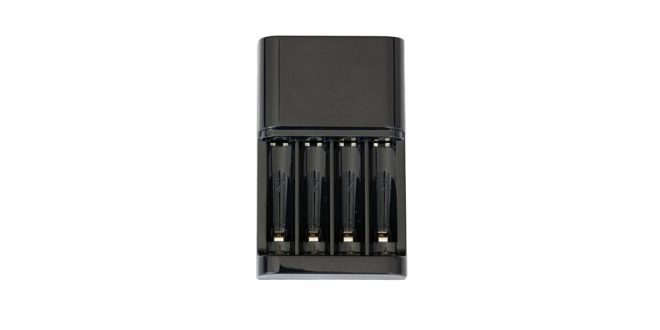Battery chargers are an essential component in the realm of IT hardware and power devices. In today’s technology-driven world, battery chargers play a vital role in keeping electronic devices, such as laptops, mobile phones, power tools, and more, up and running. Whether used for computers or other gadgets, they ensure uninterrupted performance and reliability. With advancements in Technology, the market offers a variety of battery chargers designed to meet different power requirements and support various devices.
Types of Battery Chargers
Understanding the different types of battery chargers is crucial for ensuring compatibility with devices and optimizing performance. Battery chargers vary in design, charging speed, and functionality, and can be broadly categorized into several types:
1. Standard Chargers: These are the most common and basic types, typically used for simple tasks like charging AA or AAA batteries. Standard chargers deliver a constant current to the battery and are often affordable. However, they may take longer to charge and are not suitable for high-power devices.
2. Fast Chargers: Fast chargers are designed to provide a higher charging rate than standard ones, significantly reducing the time it takes to charge a device. These chargers are ideal for mobile phones, laptops, and other high-power devices, making them a popular choice in modern technology.
3. Trickle Chargers: Trickle chargers maintain the charge level of batteries over an extended period. They are often used for devices that are not in continuous use but need to be ready when required. Trickle chargers slowly add charge to the battery to keep it full without overcharging.
4. Smart Chargers: The most advanced option in the market, smart chargers, use microprocessors to monitor and control the charging process. They can detect the battery’s status and automatically adjust the charging rate to optimize performance, prevent overheating, and extend the battery’s lifespan. Smart chargers are suitable for a variety of devices, including IT hardware and technology gadgets.
How Battery Chargers Work
Battery chargers operate by converting AC power from the grid into DC power, which is used to charge the battery. The efficiency of a battery charger depends on its ability to regulate the charging current and voltage. A high-quality charger ensures a stable power supply, reducing the risk of battery damage or overcharging.
The process involves:
- Current Flow: The charger delivers current to the battery based on its voltage level. For devices with depleted batteries, the initial current flow is high, gradually tapering off as the battery approaches full capacity.
- Voltage Regulation: Modern battery chargers use voltage regulation to ensure that the battery is charged at a consistent and safe rate. The regulation helps prevent spikes and drops in voltage, protecting the battery and the device.
- Temperature Control: Advanced chargers incorporate temperature sensors to monitor the battery’s temperature during the charging process. This feature ensures that the battery remains within a safe temperature range, preventing damage.
The Role of Battery Chargers in IT Hardware
Battery chargers are integral to IT hardware, particularly in mobile computing devices, servers, and power devices that rely on uninterrupted power sources. The efficiency of Battery Chargers in IT environments is crucial for ensuring smooth operations and maintaining productivity.
1. Laptops and Portable Devices: Laptops, tablets, and other portable devices rely heavily on battery chargers for mobility. The rapid advancement in technology has led to the development of chargers that are faster, more efficient, and compact, making it easier for professionals and tech enthusiasts to stay powered up on the go.
2. Servers and Data Centers: In data centers, UPS (Uninterruptible Power Supply) systems depend on high-capacity battery chargers to ensure that critical infrastructure remains operational during power outages. These chargers are designed to handle large battery banks and provide stable power, minimizing the risk of downtime.
3. Power Devices: IT hardware such as routers, switches, and other network equipment often use battery backup systems. Reliable battery chargers play a vital role in maintaining these devices, ensuring that the network infrastructure remains secure and functional even in the event of power fluctuations.
Innovations in Battery Charger Technology
The evolution of battery chargers is closely tied to advances in technology, particularly in the fields of power devices and IT hardware. Some of the latest innovations include:
1. Wireless Charging: Wireless charging technology has revolutionized the way we charge devices, eliminating the need for cables. This technology uses electromagnetic fields to transfer energy between the charger and the device, providing convenience and ease of use for modern tech users.
2. USB-C Fast Charging: The introduction of USB-C has enhanced the efficiency and speed of charging devices. USB-C supports higher power output, enabling fast charging for laptops, tablets, and smartphones. This technology has become a standard for many IT hardware and power devices due to its versatility and speed.
3. Solar-Powered Chargers: Solar-powered battery chargers are an eco-friendly solution for charging devices. These chargers use solar panels to harness energy from the sun, making them ideal for outdoor enthusiasts and environments where electricity is scarce. Solar-powered technology also reduces dependency on traditional power sources, promoting sustainability.
4. Multi-Device Charging Stations: Multi-device charging stations are designed to charge several devices simultaneously, making them highly efficient in environments like offices, homes, and co-working spaces. These stations are particularly beneficial for businesses that rely on multiple IT hardware components and need to keep them powered up at all times.
Choosing the Right Battery Charger
Selecting the right battery charger involves understanding the device’s requirements and the charger’s capabilities. Factors to consider when choosing a battery charger include:
1. Compatibility: Ensure that the charger is compatible with the device’s voltage and power requirements. Using an incompatible charger can damage the battery and reduce its lifespan.
2. Charging Speed: Depending on the device’s usage, choosing a charger that offers the appropriate charging speed is crucial. Fast chargers are ideal for high-Power Devices, while trickle chargers are suitable for maintaining charge levels over time.
3. Safety Features: Opt for battery chargers with built-in safety features such as temperature control, overcharge protection, and short-circuit prevention. These features are essential for protecting both the device and the user.
4. Portability: For those on the go, portable chargers provide convenience and flexibility. Compact and lightweight designs are ideal for travelers and professionals who need to charge devices on the move.
Conclusion
Battery chargers are a fundamental aspect of modern technology, powering devices that are essential in our daily lives and workplaces. From portable gadgets like laptops and mobile phones to complex IT hardware in data centers, battery chargers ensure that devices operate efficiently and without interruption.
Advancements in charger Technology, such as wireless charging, USB-C, and solar power, demonstrate the industry’s commitment to innovation and convenience. These developments not only enhance user experience but also promote sustainability and energy efficiency.
Selecting the right battery charger involves understanding the needs of your device and the capabilities of the charger. With the right charger, users can ensure longevity, performance, and reliability for their devices, whether in personal or professional settings. As technology continues to evolve, the future of battery chargers looks promising, with more efficient, faster, and eco-friendly options becoming increasingly available.
 Diverse Perspectives: Insights & Stories Exploring Ideas, Sharing Knowledge
Diverse Perspectives: Insights & Stories Exploring Ideas, Sharing Knowledge





